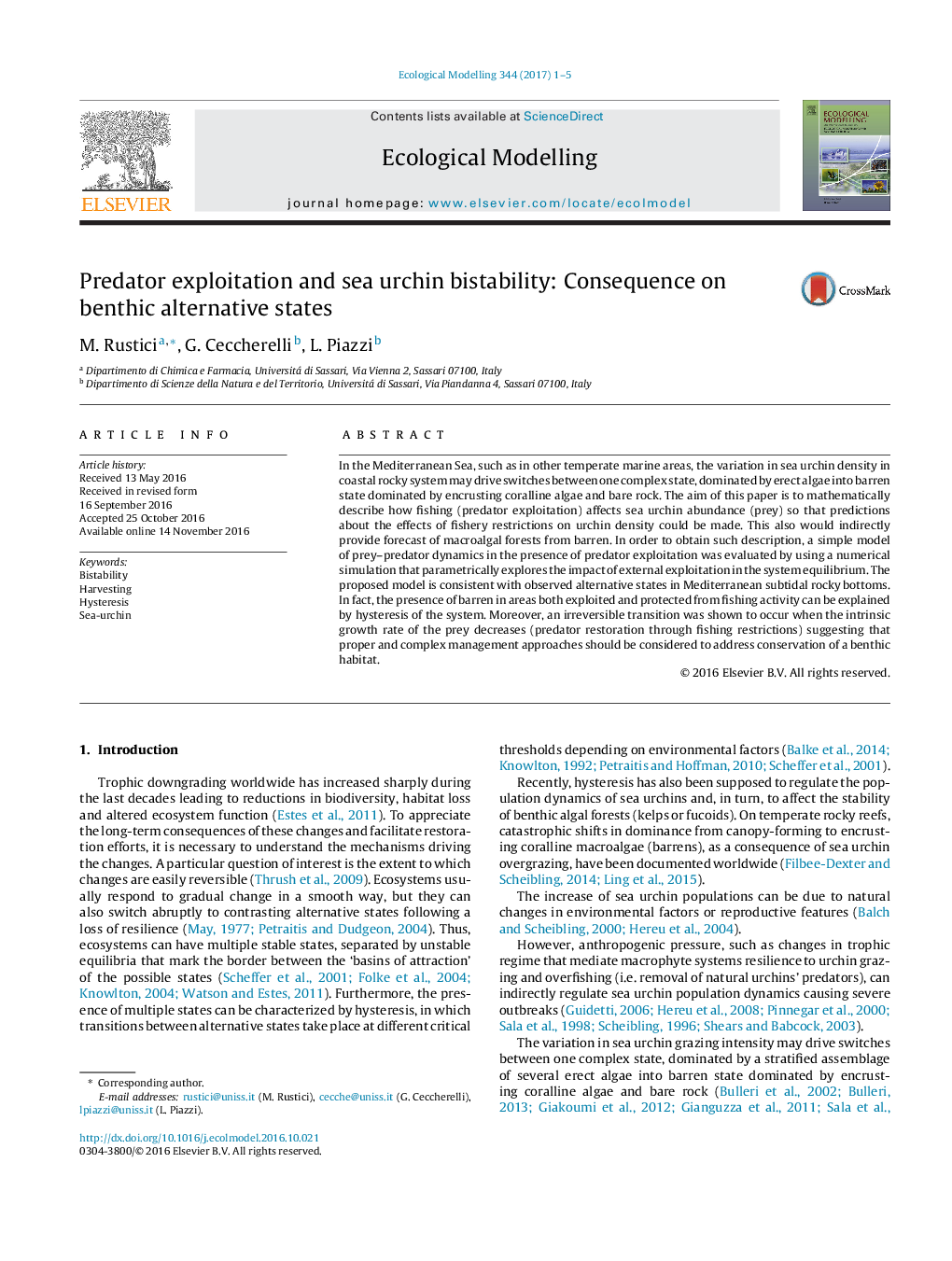| Article ID | Journal | Published Year | Pages | File Type |
|---|---|---|---|---|
| 5742274 | Ecological Modelling | 2017 | 5 Pages |
â¢A simple model of prey-predator (urchin-predator) dynamics in the presence of predator exploitation was proposed.â¢We show a simple mechanism to describe hysteretic shifts from low to high urchin density.â¢The hysteresis indirectly provides forecast of macroalgal forests from barren.
In the Mediterranean Sea, such as in other temperate marine areas, the variation in sea urchin density in coastal rocky system may drive switches between one complex state, dominated by erect algae into barren state dominated by encrusting coralline algae and bare rock. The aim of this paper is to mathematically describe how fishing (predator exploitation) affects sea urchin abundance (prey) so that predictions about the effects of fishery restrictions on urchin density could be made. This also would indirectly provide forecast of macroalgal forests from barren. In order to obtain such description, a simple model of prey-predator dynamics in the presence of predator exploitation was evaluated by using a numerical simulation that parametrically explores the impact of external exploitation in the system equilibrium. The proposed model is consistent with observed alternative states in Mediterranean subtidal rocky bottoms. In fact, the presence of barren in areas both exploited and protected from fishing activity can be explained by hysteresis of the system. Moreover, an irreversible transition was shown to occur when the intrinsic growth rate of the prey decreases (predator restoration through fishing restrictions) suggesting that proper and complex management approaches should be considered to address conservation of a benthic habitat.
